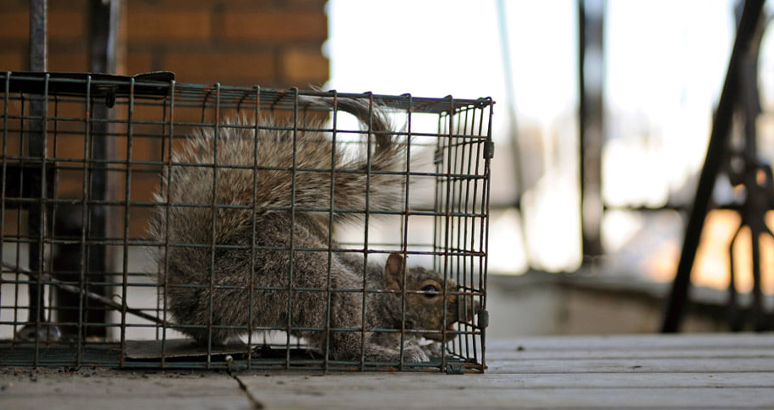
Dealing with squirrels can be a challenging task for homeowners throughout the year. These adorable creatures can quickly become a nuisance when they invade your attic, chew on electrical wires, or raid your bird feeders. To control squirrel populations and avoid possible property damage, you must take a proactive stance that considers each season’s particular difficulties.
Spring: Nesting and Reproduction
As temperatures rise and trees bloom, squirrels become more active in their search for food and nesting sites. During spring, female squirrels give birth to their first litter of the year, making them more likely to seek out warm and secure places like attics or crawl spaces for nesting. Now is the perfect time to look around your house for any possible squirrel entry points and seal them off.
Action Tips for Spring:
- Scrutinize the outside of your house, focusing on vents, openings, and rooflines.
- Reduce the amount of easy access points for squirrels by pruning tree branches over your roof.
- Consider installing squirrel-proof bird feeders to discourage them from raiding your backyard.
Summer: Increased Activity and Foraging
During the summer, squirrels are busy foraging for food to build up their reserves for the upcoming winter. They may also continue to look for sheltered areas to escape the heat. While they are less likely to enter homes during this time, they can still cause damage to gardens and outdoor structures.
Action Tips for Summer:
- Keep garbage bins securely closed to prevent squirrels from scavenging for food scraps.
- Use squirrel repellents or deterrents around vulnerable areas of your property, such as gardens or sheds.
- Inspect your attic and other potential nesting sites regularly for signs of squirrel activity.
Fall: Preparation for Winter
As temperatures cool, squirrels become more aggressive in seeking food and shelter. They may start to stockpile nuts and seeds in preparation for winter, often leading them to seek out warmer environments indoors. It is the peak season for squirrel infestations in homes.
Action Tips for Fall:
- Seal off any potential entry points with sturdy materials like steel mesh or caulking.
- Clear gutters of debris to prevent squirrels from using them as pathways to your roof.
- Consider working with a professional wildlife removal service for secure and compassionate squirrel removal from your property.
Winter: Indoor Nesting and Activity
During winter, squirrels are less active outdoors and may seek shelter inside homes where it’s warm. It can lead to significant damage as they chew through insulation, wires, and other materials to build nests. It’s crucial to take preventive measures early in the season to avoid these issues.
Action Tips for Winter:
- Look for evidence of squirrel activity in your basement and attic, such as chewed wires or droppings.
- Set traps or use exclusion devices to remove squirrels from your home safely.
- Maintain vigilance and promptly address any new entry points or signs of infestation.
Managing squirrel populations and preventing damage to your property requires a year-round commitment to vigilance and proactive measures. By understanding the seasonal behaviors of squirrels and taking appropriate actions to deter them, you can enjoy a squirrel-free home and garden throughout the year. For more personalized advice or professional assistance with squirrel control, don’t hesitate to contact Action Wildlife Removal or a local wildlife management service.

